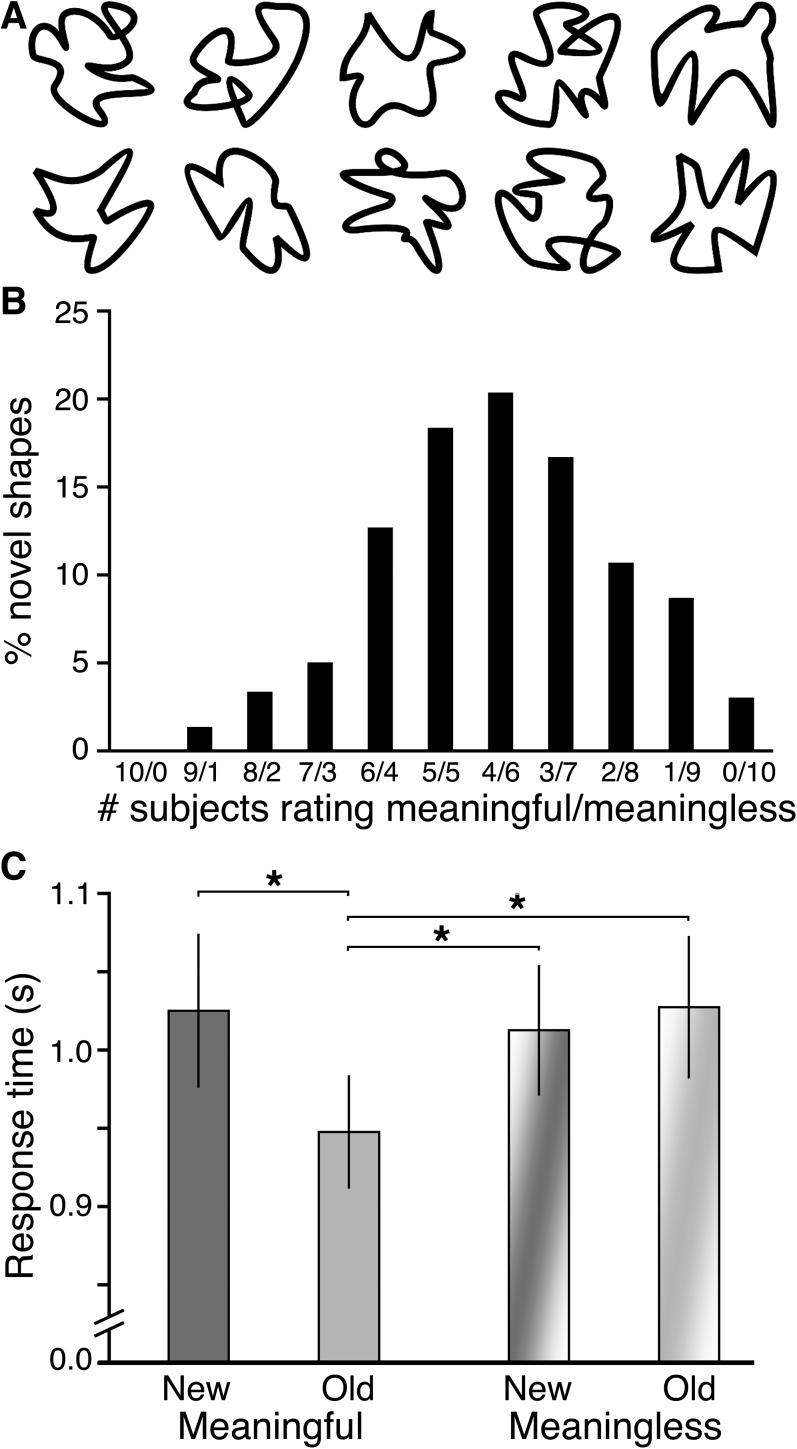Figure 2.
Conceptual priming for meaningful novel visual shapes. (A) Example squiggle stimuli. (B) Interindividual differences in meaningfulness categorization are shown as the percentage of forms rated as meaningful versus meaningless by a given number of subjects. Squiggles rated by 5 subjects as meaningful and 5 as meaningless (5/5) are most variable, whereas 10/0 indicates 100% meaningful agreement across subjects and 0/10 100% meaningless agreement. (C) Response times are given for meaningful and meaningless old and new squiggles during the conceptual priming test. Error bars indicate SE. All significant pairwise differences are indicated. *P < 0.05.

